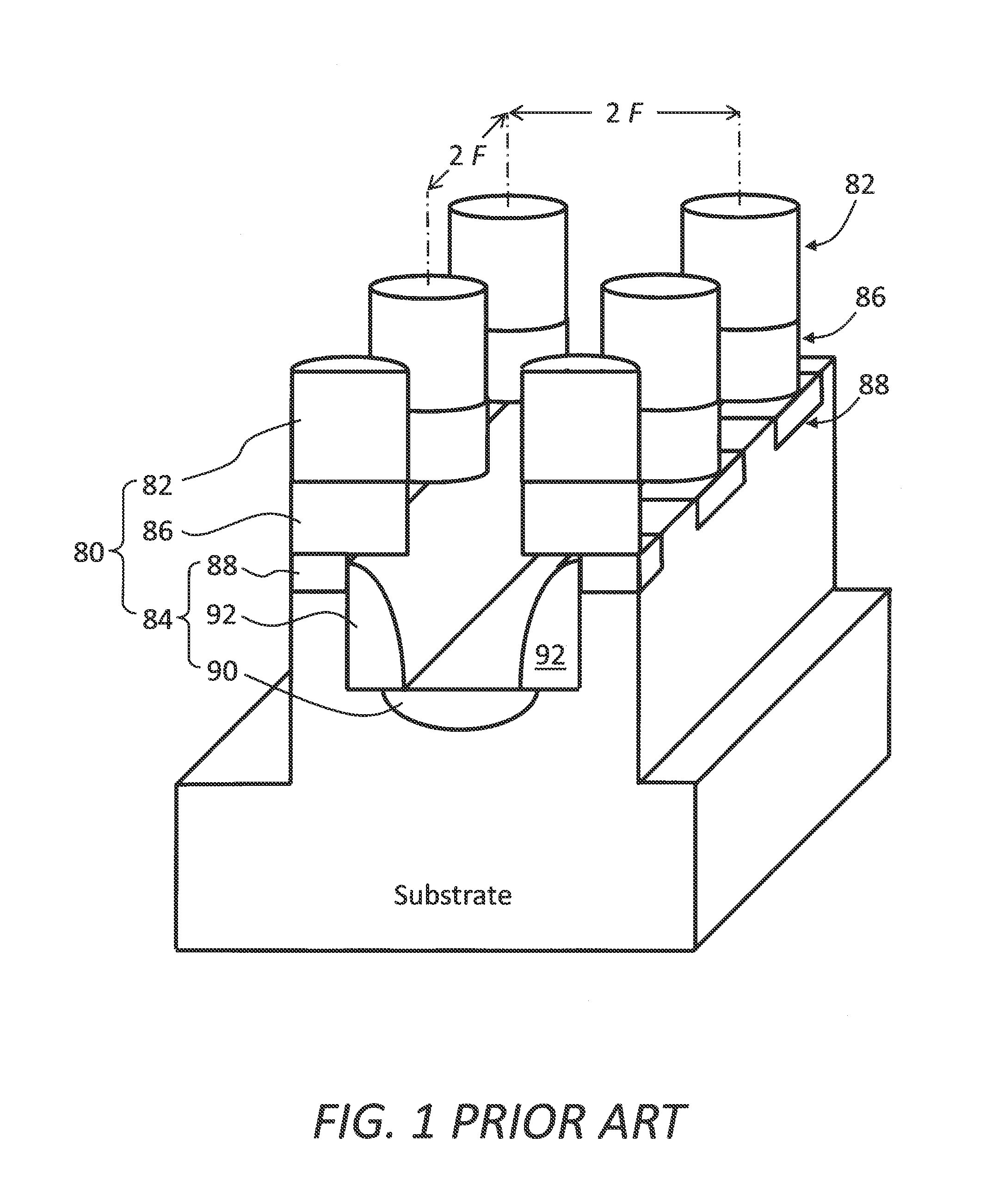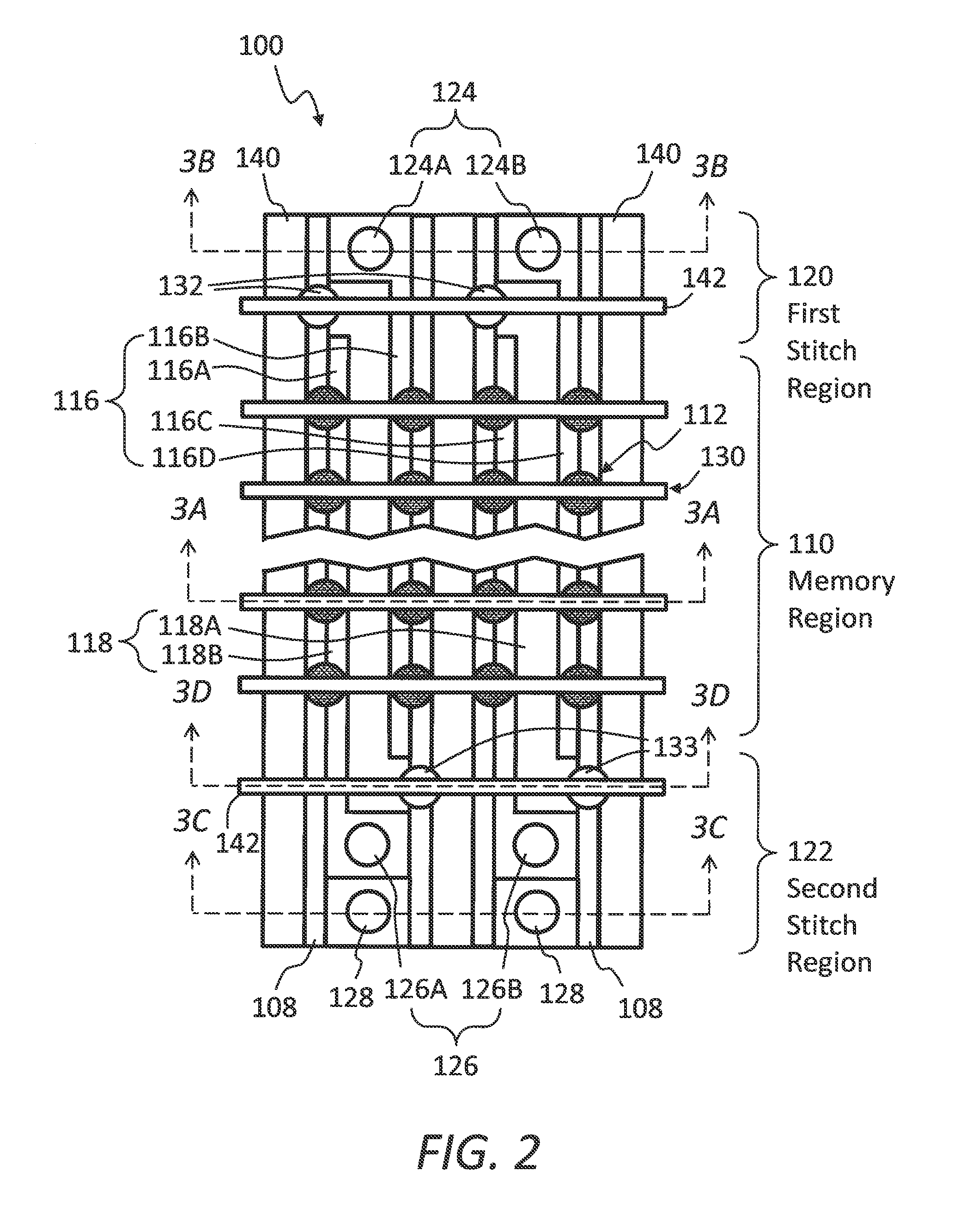Memory device having stitched arrays of 4 F2 memory cells
a memory device and array technology, applied in the field of memory devices having stitched arrays of memory cells, can solve the problems of reducing the size of the memory cell, complicating the scaling of the device, and affecting the scaling of the conventional transistor, so as to minimize the layout complexity and space usage.
- Summary
- Abstract
- Description
- Claims
- Application Information
AI Technical Summary
Benefits of technology
Problems solved by technology
Method used
Image
Examples
Embodiment Construction
[0023]The present invention provides memory devices having 4 F2 memory cells, including means for connecting arrays of memory cells to main wiring lines and to each other.
[0024]An embodiment of the present invention as applied to a memory device having an array of 4 F2 memory cells will now be described with reference to FIG. 2 and FIGS. 3A-3D. FIG. 2 is a top view and FIGS. 3A-3D are corresponding cross sectional views of a memory array 100. In these drawings the insulation material separating various elements is omitted for reasons of clarity. With continuing reference to FIG. 2 and FIGS. 3A-3D, the illustrated memory array 100 comprises a semiconductor substrate 102 having a plurality of parallel trenches 104 therein, each of the trenches having a respective one of a plurality of trench bottoms 106 and a respective pair of a plurality of paired trench sidewalls 108; a memory region 110 formed in the semiconductor substrate 102 including an array of memory cells 112 having a plura...
PUM
 Login to View More
Login to View More Abstract
Description
Claims
Application Information
 Login to View More
Login to View More - R&D
- Intellectual Property
- Life Sciences
- Materials
- Tech Scout
- Unparalleled Data Quality
- Higher Quality Content
- 60% Fewer Hallucinations
Browse by: Latest US Patents, China's latest patents, Technical Efficacy Thesaurus, Application Domain, Technology Topic, Popular Technical Reports.
© 2025 PatSnap. All rights reserved.Legal|Privacy policy|Modern Slavery Act Transparency Statement|Sitemap|About US| Contact US: help@patsnap.com



